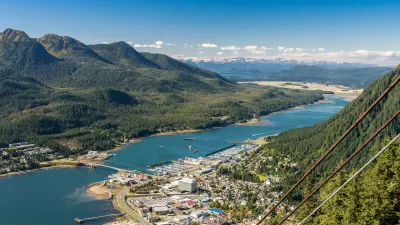With even the most remote parts of the world subjected to the "human din" of an internal combustion engine daily, Kim Tingley ventures to Denali National Park to find out if, in fact, silence is going extinct.
The possible "end of silence" caused by our work and travels is not just an abstract question meant to torment the most intrepid backwoods travelers among us.
According to Tingley, "That sort of human din, studies are beginning to suggest, is imperiling habitat - in Denali as well as wilderness areas around the world - as surely as a bulldozer or oil spill. But scientists have so little information about what landscapes should sound like without human interference that trying to correct the problem would be like a surgeon's wielding a scalpel without knowing the parts of the body, let alone his patient's symptoms. To restore ecosystems to acoustic health, researchers must determine, to the last raindrop, what compositions nature would play without us."
Yet even in Denali, "[a]n undeveloped swath of land nearly the size of Vermont," with only one, mostly unpaved, road entering the park itself, "scientists...have recorded only 36 complete days in which the sounds of an internal combustion engine of some sort were absent [since 2006]," reports Tingley.
While the profound and adverse effects of increasing noise levels on natural species have been noted in several studies, the effect on humans may be just as detrimental. "We're kind of severing the acoustic link that humans have with nature," laments Bryan Pijanowski, an ecologist at Purdue University.
FULL STORY: Is Silence Going Extinct?

Alabama: Trump Terminates Settlements for Black Communities Harmed By Raw Sewage
Trump deemed the landmark civil rights agreement “illegal DEI and environmental justice policy.”

Planetizen Federal Action Tracker
A weekly monitor of how Trump’s orders and actions are impacting planners and planning in America.

The 120 Year Old Tiny Home Villages That Sheltered San Francisco’s Earthquake Refugees
More than a century ago, San Francisco mobilized to house thousands of residents displaced by the 1906 earthquake. Could their strategy offer a model for the present?

In Both Crashes and Crime, Public Transportation is Far Safer than Driving
Contrary to popular assumptions, public transportation has far lower crash and crime rates than automobile travel. For safer communities, improve and encourage transit travel.

Report: Zoning Reforms Should Complement Nashville’s Ambitious Transit Plan
Without reform, restrictive zoning codes will limit the impact of the city’s planned transit expansion and could exclude some of the residents who depend on transit the most.

Judge Orders Release of Frozen IRA, IIJA Funding
The decision is a victory for environmental groups who charged that freezing funds for critical infrastructure and disaster response programs caused “real and irreparable harm” to communities.
Urban Design for Planners 1: Software Tools
This six-course series explores essential urban design concepts using open source software and equips planners with the tools they need to participate fully in the urban design process.
Planning for Universal Design
Learn the tools for implementing Universal Design in planning regulations.
Clanton & Associates, Inc.
Jessamine County Fiscal Court
Institute for Housing and Urban Development Studies (IHS)
City of Grandview
Harvard GSD Executive Education
Toledo-Lucas County Plan Commissions
Salt Lake City
NYU Wagner Graduate School of Public Service





























